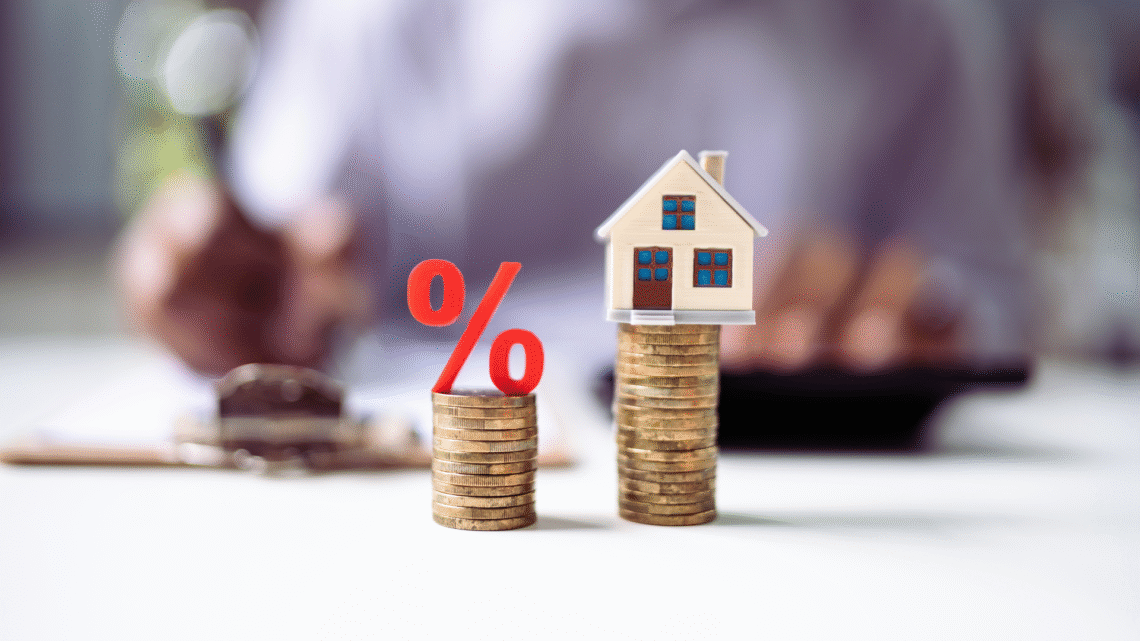
Understanding Cap Rates and ROI for Rental Properties: A Comprehensive Guide for Investors
Investing in rental properties requires a solid grasp of financial metrics, particularly cap rates and return on investment (ROI). Cap rates assess the potential return of a property relative to its purchase price, making them essential for evaluating investment opportunities. Understanding ROI further provides insight into the profitability of an investment, taking into account all income and expenses associated with the property.
When it comes to making informed decisions, both cap rates and ROI offer valuable perspectives. While a high cap rate might indicate a lucrative property, it’s crucial to analyze the underlying factors that contribute to these numbers. Investors can strategically leverage this knowledge to identify properties that align with their financial goals.
Navigating the complexities of these metrics can be daunting for newcomers and seasoned investors alike. By breaking down the specifics of cap rates and ROI, this article aims to simplify the process, helping readers make smarter investment choices in the rental market.
Key Metrics: Cap Rates and ROI Basics
Cap rates and ROI are essential metrics for evaluating rental properties. Understanding how these figures work helps investors make informed decisions in real estate investing.
What Is Cap Rate?
The capitalization rate, or cap rate, is a key metric in real estate that measures the expected return on an investment property. It is calculated by dividing the net operating income (NOI) by the property’s current market value.
Cap Rate Formula:
[ text{Cap Rate} = frac{text{Net Operating Income (NOI)}}{text{Current Market Value}} ]
For example, if a rental property generates $30,000 in NOI and is valued at $500,000, the cap rate would be 6% ($30,000 ÷ $500,000). A higher cap rate indicates a potentially higher return, but it may also signify greater risk.
Understanding ROI in Real Estate
Return on investment (ROI) is another critical metric measuring the profitability of an investment property. Unlike cap rate, which focuses on income relative to property value, ROI considers the total investment cost, including purchase price, renovation costs, and operational expenses.
ROI Formula:
[ text{ROI} = frac{text{Net Profit}}{text{Total Investment}} times 100 ]
For example, if a property is bought for $400,000, with $50,000 in renovations and sells for $550,000, the ROI would be based on the net profit of $100,000 divided by the total investment of $450,000, equating to roughly 22.2%.
Cap Rate vs ROI: Critical Differences
Although cap rates and ROI both evaluate investment performance, they serve different purposes. Cap rate offers a quick assessment of a property’s income-generating potential based on current valuation. It is typically used for comparing similar properties.
ROI, on the other hand, provides a comprehensive view of all costs and returns, making it more suitable for long-term investment analysis. Investors should analyze both metrics for a complete picture, as they can guide decision-making and strategy in real estate investing.
How to Calculate Cap Rate and ROI
Calculating cap rate and ROI for rental properties is crucial for investors to understand the profitability of their investments. Both metrics provide insights into how well a property is performing financially. This section covers the essential calculations for cap rate and ROI, along with common mistakes to avoid.
Net Operating Income and Cap Rate Calculation
Net Operating Income (NOI) is the income generated from a property after deducting all operating expenses. To calculate NOI, subtract total operating expenses from gross rental income.
Formula:
[ text{NOI} = text{Gross Rental Income} – text{Operating Expenses} ]
Once NOI is determined, the cap rate can be calculated using the purchase price or market value of the property.
Formula:
[ text{Cap Rate} = frac{text{NOI}}{text{Purchase Price or Market Value}} times 100 ]
For example, if a property generates an NOI of $30,000 and has a market value of $500,000, the cap rate would be:
[ text{Cap Rate} = frac{30,000}{500,000} times 100 = 6% ]
Calculating ROI for Rental Properties
Return on Investment (ROI) measures the profitability of an investment relative to its cost. For rental properties, it considers cash flow versus total investment, which includes acquisition costs.
Formula:
[ text{ROI} = frac{text{Annual Cash Flow}}{text{Total Investment}} times 100 ]
To determine Annual Cash Flow, subtract the annual expenses from the annual rental income. Total investment includes purchase price, closing costs, and any renovation expenses.
Calculating cash-on-cash return provides another layer of insight. It focuses solely on the cash invested in the property.
Cash-on-Cash Return Formula:
[ text{Cash-on-Cash Return} = frac{text{Cash Flow}}{text{Total Cash Invested}} times 100 ]
Common Mistakes When Calculating Cap Rates and ROI
Investors often make errors that can skew their calculations. One common mistake is failing to account for all operating expenses when calculating NOI. Operating expenses should include maintenance, property management fees, and insurance.
Another mistake is using the wrong figures for the property’s purchase price or market value. Accurate and current data is essential for reliable calculations.
Additionally, neglecting to consider financing costs can misrepresent ROI. Focusing only on cash income without factoring in debt service can lead to unrealistic expectations.
By avoiding these pitfalls, investors can make more informed decisions about their rental properties.
Factors That Impact Cap Rates and ROI
Several key components influence cap rates and return on investment (ROI) for rental properties. Understanding these factors enables property investors to make informed decisions.
Rental Income and Operating Expenses
Rental income is the primary revenue source for any rental property. Higher rental rates can significantly enhance cash flow and improve ROI. Factors influencing rental income include location, demand, and property condition.
Operating expenses consist of ongoing costs necessary for property maintenance. This includes property taxes, insurance, utilities, and property management fees. For example, property taxes can vary widely by area, affecting net operating income. Maintenance costs and repair expenses should also be factored in, as they can fluctuate based on the property’s age and condition.
Investors must assess potential vacancy rates as well. High vacancy rates can decrease rental income, ultimately dragging down ROI. Maintaining competitive rental rates while managing expenses is crucial for maximizing overall profitability.
Property Type, Condition, and Location
The type and condition of a property are critical in determining cap rates. Residential real estate often offers different cap rates compared to commercial properties. Newer properties may have lower maintenance costs, while older properties might require substantial repairs, impacting both ROI and cap rates.
Location plays a significant role as well. Properties in desirable neighborhoods typically command higher rental rates and experience lower vacancy rates. Comparable properties should be analyzed to gauge the market and set competitive rental prices.
Economic factors and local amenities will also influence property value. Areas with good schools, shopping, and transportation options tend to attract tenants, leading to enhanced returns. Taking all these elements into account is essential for making wise investments.
Financing and Closing Costs
The method of financing a property can greatly affect ROI. Investors often use mortgages to leverage their investments, which can amplify returns. However, higher interest rates increase monthly payments and reduce cash flow. Therefore, it is essential to analyze various financing options.
Closing costs also impact the initial investment amount. These may include appraisal fees, title insurance, and attorney fees, which can add up quickly. Understanding the total costs involved in closing can help investors anticipate their upfront expenses.
Investors should also consider the impact of financing terms, such as the length of the loan and whether it is fixed or variable. Each option poses unique risks and benefits that can influence overall ROI.
Market Trends and Inflation
Market trends directly affect rental rates and property values. Economic indicators, such as job growth and wage increases, can drive rental demand. Investors should regularly monitor these trends to adjust their strategies accordingly.
Inflation can erode purchasing power and impact operating expenses. As costs rise, landlords may need to increase rental rates to maintain cash flow. Understanding local and national inflation rates is vital for forecasting future profitability.
In periods of inflation, property often acts as a hedge. Real estate tends to appreciate over time, potentially leading to increased value and enhanced returns. Staying informed about market dynamics is essential for rental property investors looking to optimize their portfolios.
Comparing and Interpreting Returns Across Rental Properties
Examining rental properties requires an analysis of returns through various lenses. Key factors include comparable properties, specific market conditions, and the overall cash flow potential.
Benchmarking with Comparable Properties
To evaluate a rental property’s performance, comparing it with similar properties is crucial. This process involves identifying properties with similar features, such as size, location, and amenities.
Factors to Consider:
- Property Value: Establish a baseline of what comparable properties are valued at.
- Rental Rates: Review the rental rates for these properties to understand market expectations.
- Occupancy Rate: Analyze how quickly similar properties are rented and their vacancy periods.
A table can be helpful for comparison:
| Property | Value | Monthly Rent | Occupancy Rate |
| Property A | $300,000 | $1,800 | 95% |
| Property B | $350,000 | $2,000 | 90% |
| Property C | $320,000 | $1,850 | 92% |
This benchmarking provides context for assessing whether a property is priced appropriately and performing well.
Assessing Risk and Return by Location
Location significantly impacts a property’s return on investment (ROI). Areas with robust job markets often attract higher occupancy rates and rental prices.
Investors should consider:
- Market Value Trends: Evaluate how quickly home values are appreciating in the area.
- Economic Indicators: Analyze local employment rates and demographic trends.
- Safety and Amenities: Properties in safe neighborhoods with amenities draw more tenants, increasing profitability.
Geographic analysis can reveal areas of potential growth versus stagnation, helping to guide investment decisions.
Optimizing Profitability and Cash Flow
Cash flow is a critical measure of a rental property’s success. After accounting for all expenses, positive cash flow indicates profitability.
Key strategies to enhance cash flow include:
- Increasing Rental Rates: Align rates with comparable properties while ensuring occupancy.
- Reducing Vacancies: Efficient tenant management and quick turnover can minimize income loss.
- Cost Management: Evaluate and optimize maintenance costs, property management fees, and utilities.
By focusing on these areas, property owners can maximize their returns and ensure that their investments yield optimal financial results.





